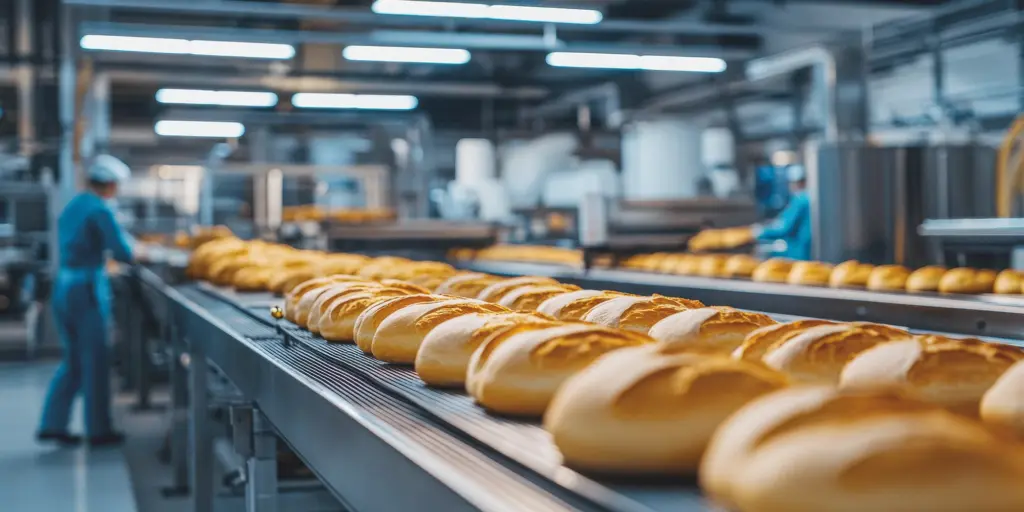Radio frequency (RF) drying is emerging as a fast, energy-efficient alternative to conventional thermal drying methods in manufacturing and food production. New developments from 42T means it has the potential to push into new markets that were until now inaccessible such as printing and coating. In this expert Q&A, four specialists discuss top RF applications, technical challenges and how the technology can improve efficiency and reduce costs across industrial processes.
As manufacturers seek cleaner, faster and more energy-efficient alternatives to conventional drying methods, radio frequency (RF) drying is stepping into the spotlight. Unlike hot air or infrared (IR) systems – which heat everything they come into contact with, including the substrate – RF heating targets moisture directly within the material. IR generates heat through exciting molecular vibrations, while microwave systems primarily rely on exciting the dipole rotation of polar water molecules. Both rely on the absorption of electromagnetic waves of the appropriate frequency.
RF heating, by contrast, works via an applied electric field interacting with dissolved ions in the target, which is usually comprised mostly of water. Dissolved ions oscillate backwards and forwards due to the RF electric field, producing heat through friction as the ions collide with the surrounding water molecules. This effect results in rapid, uniform and volumetric energy transfer, enabling precise moisture removal without overheating the product or the surrounding material. These characteristics make RF drying a compelling solution across a wide range of applications, from food production to advanced printing.
In this Q&A, four experts from 42T explain how RF drying works, where it outperforms conventional systems and what challenges still need to be solved before it becomes mainstream.
Meet the experts behind 42T’s RF drying innovation
Dr Peter Brown – Chief Commercial Officer (CCO)
A recognised leader in printing and packaging innovation, Peter has over 20 years’ experience pioneering advanced manufacturing solutions, with deep expertise in printing and ink-based industrial processes.
Dr Stuart Gilby – Director of Food and Beverage
Stuart leads the development of sustainable products, packaging and processes for the food and beverage sector, bringing complex ideas to market through cross-disciplinary collaboration.
David Griffin – Principal Consultant – Manufacturing Innovation & Automation
David is a multidisciplinary engineer known for delivering breakthrough products in life sciences, with particular strength in fluid and thermal systems, automation and control.
Rowan Beale – Head of Hardware Development
Rowan leads the design and development of robust, scalable hardware systems, bridging the gap between concept and real-world manufacturing performance.
What are the top applications of radio frequency (RF) drying in manufacturing and food production?
David Griffin:
RF drying excels at removing water without overheating the underlying product. This makes it ideal for thermally sensitive substrates – like inks on packaging – where conventional methods could cause damage or inefficiencies. It’s particularly useful for aqueous ink drying, which is more environmentally friendly than solvent-based alternatives.
Stuart Gilby:
RF drying has the potential to replace gas ovens in dehydration steps, particularly in food production. However, it’s often used in combination with other methods, especially where flavour development (like Maillard reactions) is important.
“Industries such as textiles, paper, wood, and moisture-sensitive food products were among the earliest adopters of RF drying. These industries value RF drying for its ability to provide even moisture removal, which significantly minimises the risk of shrinkage or localised over-drying.”
What are the biggest technical challenges of implementing RF drying systems in industrial settings?
David Griffin:
Control and safety are major concerns. RF power must be carefully regulated to ensure consistent results across varying tunnel or oven loading. Electrode design becomes complicated with non-flat products, and safety is an issue, especially around high voltage and condensation-induced arcing.
Stuart Gilby:
Maintaining throughput while handling product inconsistency is a challenge. There’s also a risk of superheating causing unwanted flavours, similar to issues seen with microwaves.
Peter Brown:
RF technology has long relied on vacuum tube-based amplifiers, which are large, expensive and inflexible. This makes them unsuitable for printing applications where low power and precise control are required.
Current RF dryers struggle with:
- Drying thin ink films or droplets just a few microns in diameter and thickness.
- Operating at powers as low as tens of watts, necessary for coding and marking.
- Adapting to changing RF characteristics during drying.
Our solid-state RF solution overcomes these limitations and is far more adaptable to modern needs.
Rowan Beale:
At present, the high initial investment required to switch to RF drying systems presents a major barrier. RF systems require specific tuning, which demands technical know-how. Additional concerns include the need for effective safety shielding and modifications to existing workflows.
Which materials and products benefit most from radio frequency drying in your industry?
David Griffin:
Products with large thermal mass or temperature sensitivity benefit from RF drying, which offers safer, more energy-efficient moisture removal than conventional methods like hot air or infrared, which can result in excessive temperatures in areas of the substrate where the drying is complete.
RF drying is also effective where space is limited and rapid moisture removal is critical.
It’s a common misconception that RF drying is only suited to large objects. In fact, the effectiveness of RF depends more on material properties (like water content and ionic conductivity) and how well the energy can be coupled into the target, rather than the absolute size of the item. For example, drying aqueous ink on a continuous film is far more efficient than attempting to dry water-based paint on a complex-shaped item like a lawn mower.
“For food products like biscuits, cakes, and snacks, RF technology offers a highly effective solution for quick and even drying post-bake. This method is particularly beneficial in applications where consistent moisture reduction is critical for product quality and shelf life.”
Rowan Beale:
Primarily, aqueous solutions with ionic conductivity benefit most from RF drying. However, its advantages are broader; any product that is large or suffers from uneven drying can see real improvements, provided the medium to heat is aqueous. RF drying is also useful for applications where selective or internal heating is required, which may not be achievable with conventional contact-based methods. Unlike external heating approaches, RF can deliver uniform energy distribution directly within the target material, leading to more consistent results.
How can manufacturers calculate ROI and evaluate the cost-effectiveness of RF drying technology?
David Griffin:
The benefits will come in both energy saving and potentially reduced process footprint. Manufacturers should consider all the costs of the process(es) that RF drying will replace.
RF drying can drive ROI through:
- Reduced energy consumption.
- Smaller footprint and lower infrastructure cost.
- Faster processing, lowering work-in-progress inventory.
- Costs of extraction / treatment for the organic solvents previously used.
Stuart Gilby:
When evaluating the implementation of new RF drying technology, two critical factors to consider are the total energy cost per product and its footprint.
Calculating the annualised energy cost per unit produced is essential for a comprehensive financial assessment. This metric allows for a direct comparison with existing drying methods and provides a clear understanding of the operational expenditure.
Beyond energy consumption, the smaller footprint of RF drying systems offers a significant, often overlooked, benefit: factory space optimisation. A more compact RF dryer can free up valuable floor space, which can then be re-purposed for new production processes or to expand existing capacity. This ability to enable production expansion directly contributes to increased output and can be a substantial return on investment.
Peter Brown:
From a financial point of view, the best way is a Total Cost of Ownership (TCO) calculation. However, depending on the application, there could be other strong advantages that are harder to put a monetary value on. For example…
“…we believe RF drying could allow aqueous inks to be used with non-absorbing substrates such as plastic film, opening up entirely new applications. Currently, only solvent-based or UV-cured inks can be used with plastic films; neither of which is suitable for food and beverage packaging…”
…RF drying should also be independent of colour, whereas IR shows a very strong colour effect and dries black inks a lot quicker than yellow inks, for example.
Rowan Beale:
Traditional ROI calculations still apply. These include:
- Energy savings from targeted heating
- Faster throughput
- Higher quality products leading to reduced waste through consistent drying
- Lower maintenance from fewer moving parts
However, the real value lies in unlocking new capabilities and enabling applications beyond the reach of conventional drying systems.
How does RF drying compare to conventional methods in terms of energy efficiency, sustainability, and product quality?
“It’s more efficient because it heats only the water, not the product. This reduces energy use and avoids post-cooling. It also enables a move away from solvent-based coatings.”
Peter Brown:
Compared to other printing drying methods for printing and coating:
- Hot air: ~5% efficient
- Near-Infrared (NIR): ~15% efficient
- RF drying: up to 75% efficient
Unlike IR, which dries inks unevenly based on colour, RF is colour independent.
Hot air and IR can heat the substrate itself, which can risk damage. RF doesn’t heat non-absorbing substrates at all and only heats absorbing substrates (such as paper) if some water has been absorbed. This could open up new markets for aqueous inks and coatings on thin plastic film, which is important for packaging.
Water droplets are heated instantaneously and uniformly in RF drying.
42T’s RF drying solution is highly scalable from <10W to >10kW, whereas conventional vacuum tube RF drying is suitable only for high powers.
RF drying opens new frontiers for IP development in printing and coating; far beyond what’s possible with traditional methods.
Rowan Beale:
Building on Peter’s points around efficiency and performance, RF drying delivers more uniform heating and typically results in a lower carbon footprint due to its energy efficiency. There are also indirect sustainability gains, for instance: if RF systems can be designed to occupy smaller volumes, this can reduce infrastructure costs and environmental impact by minimising required factory space.
Conclusion: The future of RF drying in industry
Radio frequency (RF) drying has long been a trusted technology in sectors like textiles and food. But what’s changing now is the scale of its potential. With the development of a solid-state RF solution, we’re unlocking entirely new applications, particularly in industries that require precise, low-power, scalable drying solutions, such as advanced printing and coating.
Unlike traditional vacuum tube RF systems, which are large, costly and limited by short component lifespans, solid-state RF is modular, energy-efficient, easier to deploy and safer to operate. This marks a fundamental shift: not just in how RF drying is delivered, but in how widely and flexibly it can be applied.
Critically, we are also challenging the outdated assumption that RF is only viable for large, macroscopic objects. Our solution proves that RF can deliver high-performance drying even for small, precision formats. As costs fall and deployment becomes more agile, solid-state RF is poised to redefine the role of drying across a wide range of industrial processes.
Want to see RF drying in action?
Explore our case study on RF drying for aqueous inks and see how 42T applied RF drying to deliver breakthrough results in precision printing.





